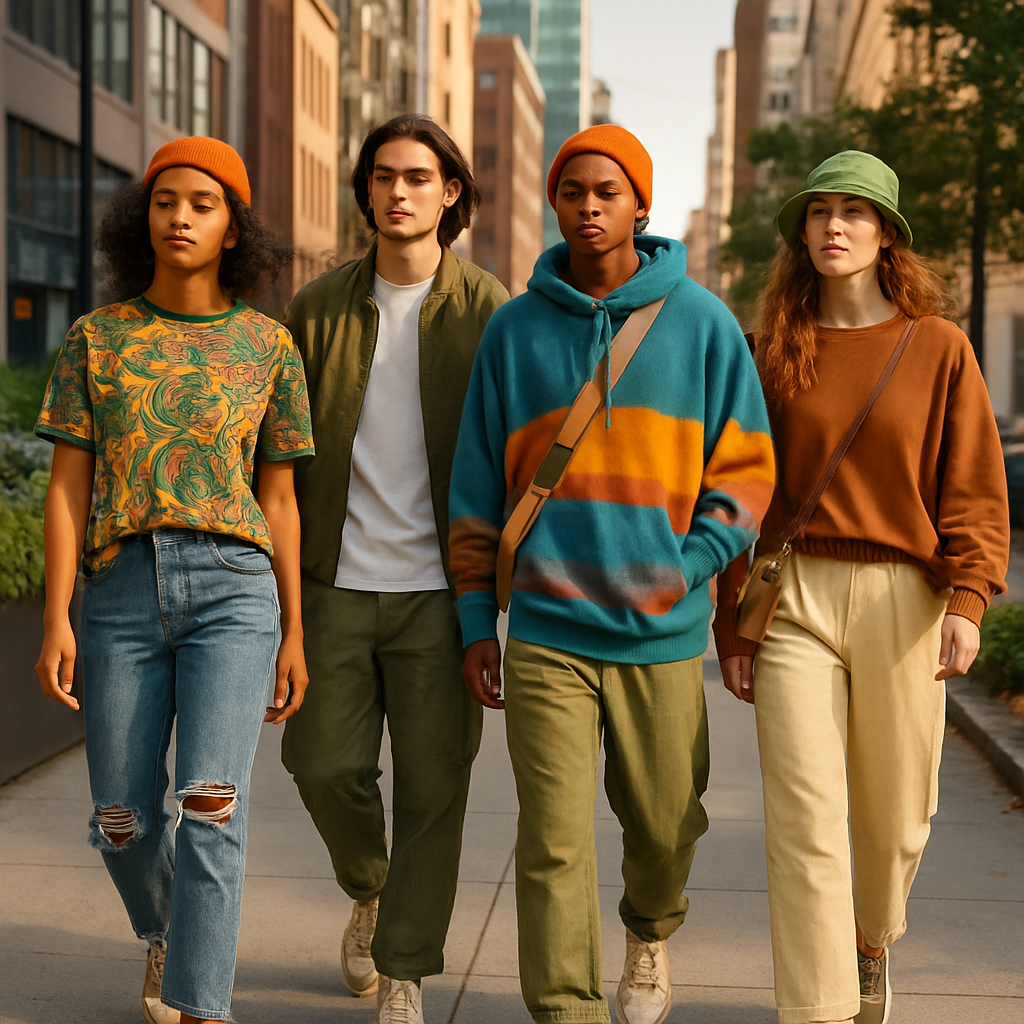The Rise of Sustainable Streetwear Trends

Sustainable streetwear is having its moment, and it’s quite something to witness. We’re talking about a fashion movement that has long been associated with urban culture, skateboarding, and hip-hop, now getting a green makeover. It’s like seeing your favorite rock band suddenly go acoustic unexpected but not unwelcome. Streetwear has always been about breaking norms and setting trends, so maybe it was inevitable that it would lead the charge in the sustainability arena.
Streetwear’s sustainability journey isn’t just about swapping out materials or tweaking designs; it’s about a whole new mindset. Gone are the days when streetwear was synonymous with fast fashion. Now, it’s about creating pieces that are not just cool but also conscious. It’s a response to growing consumer demand for ethical and environmentally friendly fashion. And let’s be honest, who doesn’t want a t-shirt that not only looks good but does good?
The Green Revolution in Streetwear
So, what’s driving this shift toward sustainability? For one, young consumers Gen Z and millennials are at the forefront, pushing for change. They’re more informed and more concerned about the planet than previous generations. A 2019 study by Nielsen found that 73% of millennials are willing to pay more for sustainable products. That’s a huge chunk of the market, and streetwear brands are taking notice. They’re adopting more sustainable practices, from sourcing materials to manufacturing processes. Think organic cotton, recycled polyester, and even upcycled fabrics. Brands like Patagonia and Adidas are pioneering in this space, showing that sustainability and style can indeed go hand in hand.
But it’s not just about materials. The whole ethos of streetwear is changing. New brands are emerging with transparency and accountability as their core values. Take Veja, for instance. Their sneakers are made from organic cotton, wild rubber from the Amazon, and recycled plastic bottles. It’s a brand that walks the talk quite literally. What’s more, they’re open about their supply chain, so customers know exactly where their shoes come from. This kind of transparency is refreshing and increasingly demanded by today’s fashion-savvy consumers.
And then there’s the small matter of longevity. In a world where trends change faster than the weather, sustainable streetwear is focusing on timeless designs and quality craftsmanship. It’s about creating pieces that last, both in terms of style and durability. Remember when you bought that jacket you thought you’d wear forever, only to find it falling apart after a season? Sustainable streetwear aims to eliminate that disappointment, offering wardrobe staples that stand the test of time.
A Personal Encounter with Sustainable Streetwear
I recall my first encounter with a sustainable streetwear piece. It was a hoodie from a brand called Pangaia. Not only was it incredibly soft, but it was made from recycled cotton and treated with a natural peppermint oil to keep it fresh. I was skeptical at first could a hoodie really stay fresh for weeks? But it did, and it quickly became my go-to for everything from coffee runs to casual Fridays. It made me realize that sustainability doesn’t mean sacrificing style or comfort. If anything, it adds a layer of story to the clothing I wear, making each piece feel special.
But maybe it’s just me who’s a sucker for a good story. Or maybe it’s something about knowing that the clothes on my back aren’t contributing to a landfill. Either way, it’s a satisfying feeling, and I suspect I’m not alone in thinking this way.
The Role of Technology and Innovation
Technology is another driving force behind sustainable streetwear. Innovations in fabric technology are creating materials that are both earth-friendly and functional. Take the use of Tencel, made from sustainably sourced wood pulp. It’s breathable, biodegradable, and has a silky-smooth finish. It’s being used in everything from t-shirts to joggers, and it’s changing the game for eco-friendly fashion.
Then there’s 3D printing, which is slowly making its way into the streetwear scene. By using this technology, brands can create complex designs with less waste, as it uses only the necessary material to construct a garment. Plus, it’s a way to produce locally, reducing the carbon footprint associated with overseas manufacturing.
And let’s not forget about digital platforms that facilitate reselling and upcycling. Websites like Grailed and Depop are thriving marketplaces for secondhand streetwear, allowing consumers to buy, sell, and trade pieces with ease. It’s a win-win situation: fashion lovers get to refresh their wardrobes, and clothing gets a second life. It’s a modern-day thrift store, with a streetwear twist.
The Unconventional Side of Sustainable Streetwear
One might wonder if sustainable streetwear could ever lose its ‘cool’ factor. After all, isn’t part of streetwear’s appeal its rebelliousness? This is where things get interesting. Some argue that by going sustainable, streetwear risks becoming too ‘mainstream’. But here’s a thought what if sustainability is the new rebellion? In a world where fast fashion dominates, choosing sustainable options is an act of defiance. It’s about standing against the throwaway culture and making a statement about what you value.
In fact, this shift could be seen as streetwear’s evolution, rather than a departure from its roots. It’s still about making a statement, but the statement has evolved. It’s now about caring for the planet and the people who live on it. It’s an evolution that feels both natural and necessary.
There’s also the argument that sustainable practices could limit creativity. But if anything, it’s sparking innovation. Designers are challenged to think outside the box, to create with constraints. It’s leading to some truly unique pieces that might not have existed otherwise. Consider how Adidas collaborated with Parley for the Oceans to create sneakers from ocean plastic waste. It’s a design that not only looks great but has a powerful message behind it.
Looking Forward
The rise of sustainable streetwear is more than just a trend it’s a movement. It’s about making fashion that matters, that tells a story, and that contributes to a better world. It’s about making choices that reflect our values and inspire others to do the same.
And while no one is suggesting that streetwear alone can solve the planet’s problems, every little bit helps. Each sustainable purchase is a step in the right direction, a vote for the kind of world we want to live in. It may not be perfect, and it’s certainly a work in progress, but it’s a start.
So, the next time you’re browsing through your favorite streetwear site, take a moment to consider the story behind the pieces. Are they made from sustainable materials? Does the brand prioritize ethical practices? It might take a little extra time and effort, but the reward is worth it a wardrobe you can feel good about, in every sense of the word.
And who knows? You might just find that your new favorite piece is not only stylish but also a testament to your commitment to a more sustainable future. Now, isn’t that something to wear with pride?


